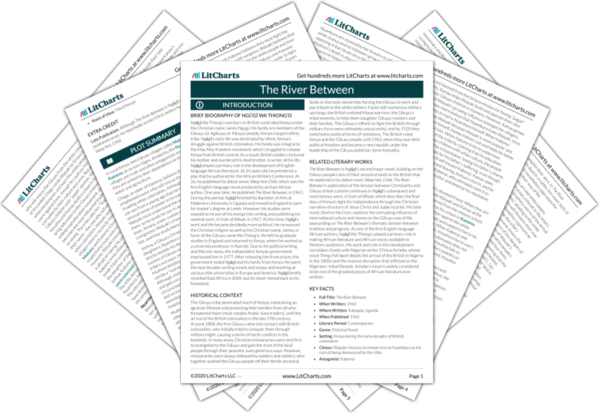Ngũgĩ Wa Thiong’o was born in British-controlled Kenya under the Christian name James Ngugi. His family are members of the Gikuyu (or Agikuyu; or Kikuyu) people, Kenya’s largest ethnic tribe. Ngũgĩ’s early life was dominated by ethnic Kenya’s struggle against British colonialism. His family was integral to the Mau Mau freedom movement, which struggled to release Kenya from British control. As a result, British soldiers tortured his mother and murdered his deaf brother. A writer all his life, Ngũgĩ played a primary role in the development of English-language African literature. At 24 years old, he premiered a play that he authored for the African Writers Conference. At 26, he published his debut novel,
Weep Not Child, which was the first English-language novel produced by an East African author. One year later, he published
The River Between, in 1965. During this period, Ngũgĩ finished his Bachelor of Arts at Makerere University in Uganda and moved to England to earn his master’s degree at Leeds. However, his studies were waylaid as he put all his energy into writing and publishing his seminal work,
A Grain of Wheat, in 1967. At this time, Ngũgĩ’s work and life became decidedly more political. He renounced the Christian religion as well as his Christian name, James, in favor of the Gikuyu name Wa Thiong’o. He left his graduate studies in England and returned to Kenya, where he worked as a university professor in Nairobi. Due to his political writing and Marxist views, the independent Kenyan government imprisoned him in 1977. After releasing him from prison, the government exiled Ngũgĩ and his family from Kenya. He spent the next decades writing novels and essays and teaching at various elite universities in Europe and America. Ngũgĩ briefly revisited East Africa in 2004, but he never moved back to his homeland.
